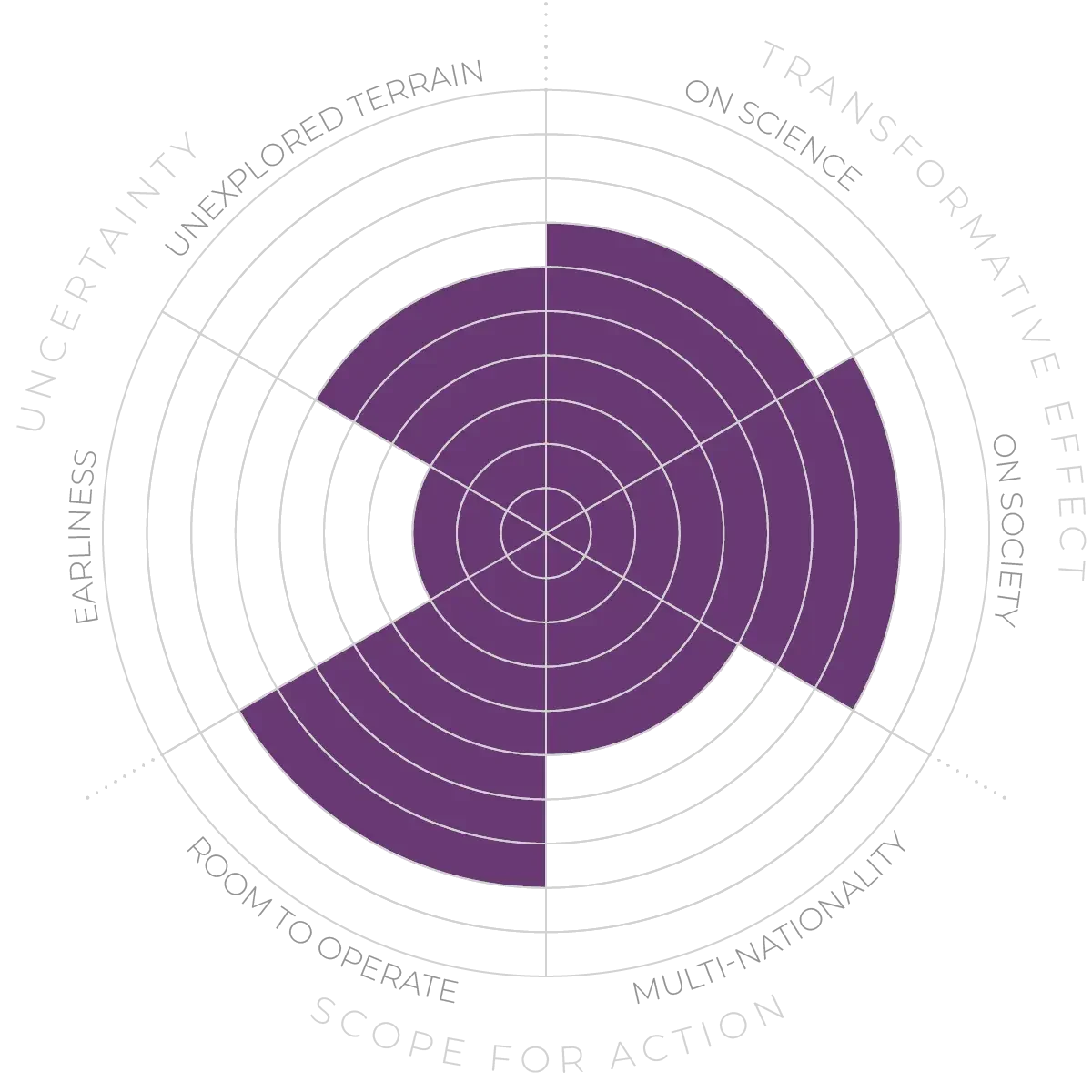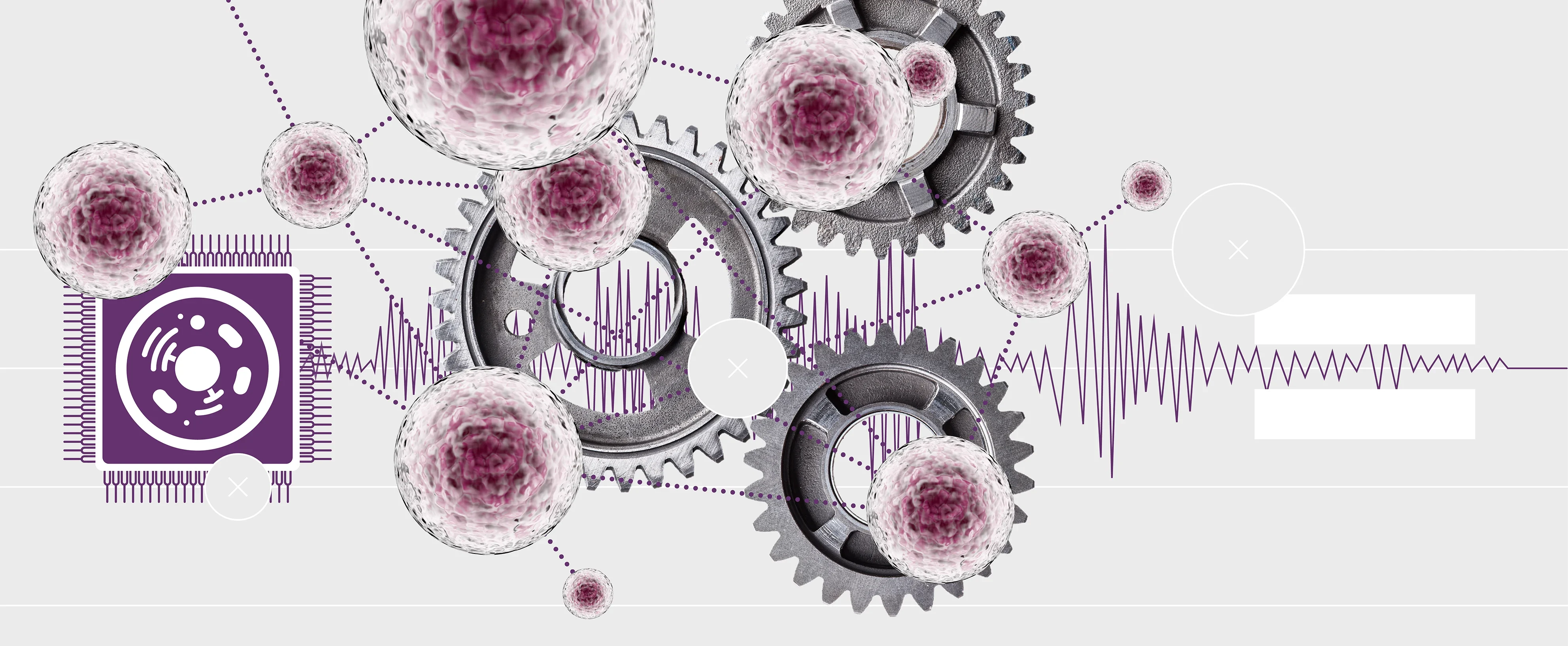Future Horizons:
10-yearhorizon
Biocomputing goes beyond Boolean logic
25-yearhorizon
Cellular computing enables ecosystem engineering
Cellular computing can go beyond mimicking standard computing, though.33 A cell’s components can be reconfigured in response to external stimuli, and evolution allows populations of cells to adapt to changing environmental circumstances. They also function well in the presence of noise. There are multiple signal pathways within each cell, enabling massively parallel information processing.
This opens up the prospect of performing “whole-cell biocomputations” to solve challenges as varied as environmental remediation, drug discovery and medical diagnosis.34 There is increasing focus on harnessing networks of cells to carry out more sophisticated distributed computation35,36,37 and even incorporating viruses as an additional communication channel.38 Newly engineered plant-microbe communication channels open up the prospect of programming entire ecosystems.39
Neuromorphic computing is proving a useful framework for guiding adaptive cellular processes,40,41 though probabilistic computing could be another powerful conceptual lens.42 The field needs deeper engagement with theoretical computer science to give it a firmer conceptual footing, in particular to formalise how various synthetic-biology tools process information.43
Cellular Computing - Anticipation Scores
The Anticipation Potential of a research field is determined by the capacity for impactful action in the present, considering possible future transformative breakthroughs in a field over a 25-year outlook. A field with a high Anticipation Potential, therefore, combines the potential range of future transformative possibilities engendered by a research area with a wide field of opportunities for action in the present. We asked researchers in the field to anticipate:
- The uncertainty related to future science breakthroughs in the field
- The transformative effect anticipated breakthroughs may have on research and society
- The scope for action in the present in relation to anticipated breakthroughs.
This chart represents a summary of their responses to each of these elements, which when combined, provide the Anticipation Potential for the topic. See methodology for more information.



